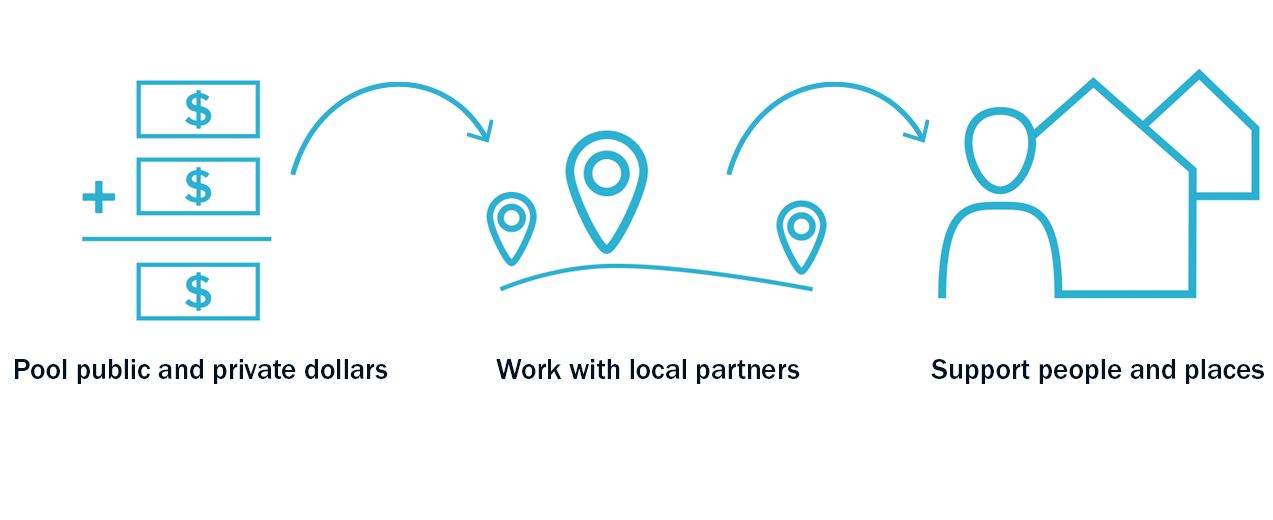How LISC Works
Connecting communities with resources
In 1979, when the Ford Foundation first conceived of LISC, it envisioned an “intermediary”—a nimble non-profit with strong community partnerships that would connect hard-to-tap public and private resources with underinvested places and people working to access opportunities everyone of us deserves.
The premise is still as it was then: government, foundations and for-profit companies have the capital; residents and local institutions understand the need; and LISC helps bridge the gap by offering the relationships and expertise to assist community organizations in attracting the kinds of resources that allow them do their best work.
The components of our programming and our role continue to evolve and expand, in particular, our commitment to systems change, equity and an overt anti-racist approach to the work. But for 40 years, our mission has remained the same.
We receive our funding from banks, corporations, foundations and government agencies. We, in turn, use that funding to provide financing (loans, grants and equity) and technical and management assistance to local partners and developers. Through our 38 local offices, a rural program that reaches more than 2,400 counties in 49 states, and LISC-founded affiliates and entities, we work with a vast network of community-based partners to make investments in housing, businesses, jobs & financial health, education, safety and health.
Our Model
